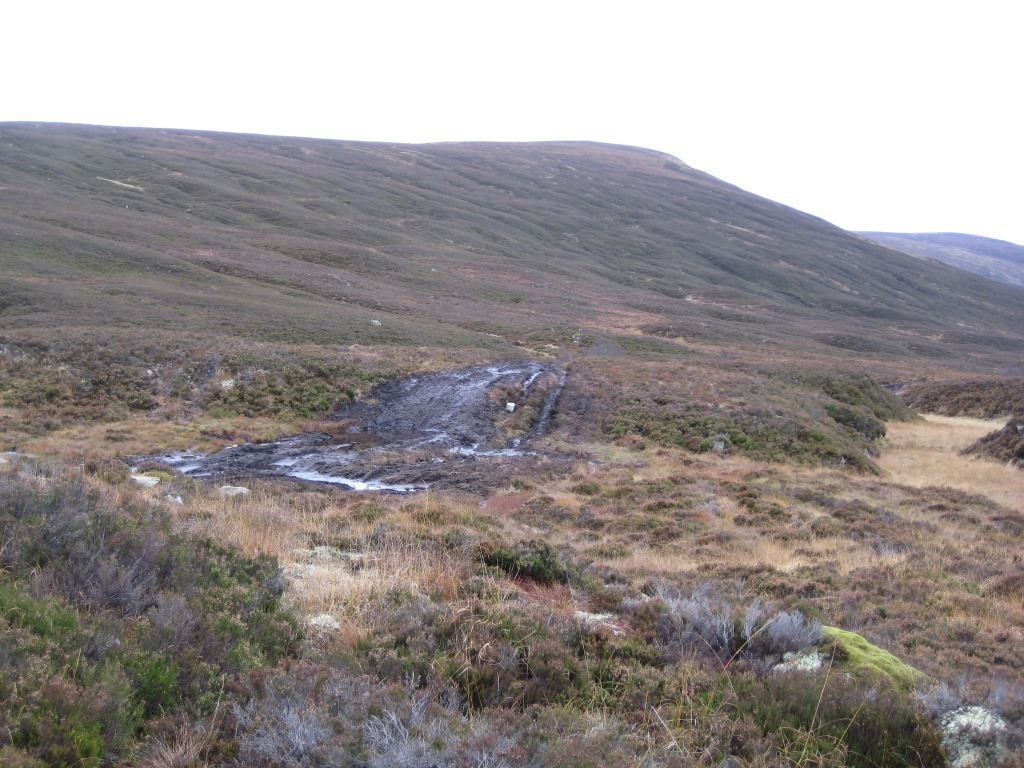
Modern ATVs allow estates motorised access to almost anywhere and their widespread use is causing environmental damage as well as creating ugly visual intrusions into otherwise unspoilt landscapes. Inevitably, planning applications are now coming forward to construct vehicle tracks where ATV damage has occurred, supported by the argument that built tracks are the lesser of the two evils.
This issue was central to the controversy over the planning application for what is essentially a new track on the Balavil estate in the Monadhliath which was approved by the Cairngorms National Park in January this year (see here). The proposed track follows the line of an old path on which limited work had been undertaken on short sections to facilitate vehicle use, along with lengthy sections ‘created’ by repeat ATV use.
All the voluntary organisations involved with hill tracks objected, arguing that the application breached the National Park’s ‘presumption against new constructed tracks in open moorland’ which was stated in the National Park’s Partnership Plan. The Park’s Planning Committee only gave approval after a vigorous debate with a number of Board Members voting to reject the application.
Following this, members of Scottish Environment LINK’s Hill Tracks Campaign Group asked for a meeting with senior representatives of the Park to discuss a number of concerns. LINK appreciated the speed with which the Park responded to this request and the meeting took place on the 12th March.
Present representing the Park were Xander McDade (Convenor), Eleanor Mackintosh (Convenor of the Planning Committee), Grant Moir (CEO)and Gavin Miles (Head of Planning and Communities). Link was represented by Helen Todd (Ramblers Scotland), Beryl Leatherland (Scottish Wildland Group) and George Allan (North East Mountain Trust).
The agenda was wide ranging and this post focusses only on the discussions regarding damage caused by ATVs, the risk of further applications for constructed tracks and how the problems might be reduced.
The following were the key points discussed:
- LINK made the case that a proactive approach to ATV use is needed to avoid more ‘Balavil type’ applications.
- LINK encouraged the Park to become an exemplar for Scotland by taking a lead on the issue, along with SNH, by producing a code of conduct laying out best practice for responsible ATV use. This approach to responsible land management is one being pioneered by the Scottish Land Commission as it begins to implement the Land Rights and Responsibilities Statement, which was approved under the Land Reform Act 2016.
- This code could include zoning, for example, with landowners identifying certain areas as no-go terrain for ATVs or other areas for light ATV use for seasonal purposes. Boggy glens are most at risk of permanent damage but they are not the only places. Another seasonal consideration would be to avoid areas used by ground nesting birds during the breeding season (around March to the end of June). It was noted that trying to discourage use in certain areas might simply shift the problem to other ground.
- The Park remains unconvinced by the desirability of byelaws, which it has the power to propose to the Scottish Government, on the basis that these would be impossible to enforce. In addition, the Park would need to demonstrate that the problem was out of control and that a voluntary approach, based on a code of conduct, had failed.
- The possibility of voluntary agreements and pilots with estates was discussed and Grant Moir said he would ask the Park’s Upland Advisory Forum to consider the options. It is good to report that Grant Moir was true to his word and immediately referred the issue to the Forum.
The discussion was constructive and the willingness of the most senior representatives of the Park to engage with the voluntary organisations bodes well that progress will be made on what is a growing and serious problem: it is critical that it is. The Park has the opportunity to lead the way in Scotland; it would be good if other planning authorities followed suit.
[Written by the author in a North East Mountain Trust (see here) capacity]
So, according to the CNPA, byelaws to control repeated damage by vehicles driving over our hill slopes and summit areas cannot be introduced because they would be “impossible to enforce”. But in the Loch Lomond and Trossachs National Park rangers act as a quasi-police force chasing campers who are complying with the Scottish Outdoor Access Code but are in breach of the Park’s camping byelaws, being in the wrong place at the wrong time, according to the Park’s opinion. In both Parks the situation is clear: the interests of the private landowner has overwhelming priority – they must be protected, whatever the cost, whereas the public, whether visitor or resident, should be persecuted, even to the extent they finish up with a criminal record. This is a scandal, long overdue for investigation by the Scottish Parliament.